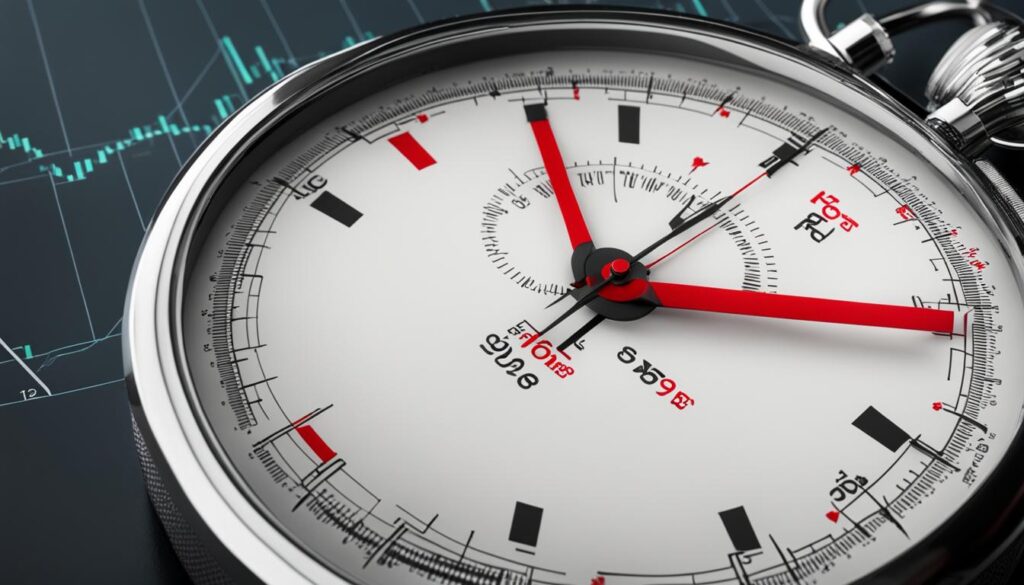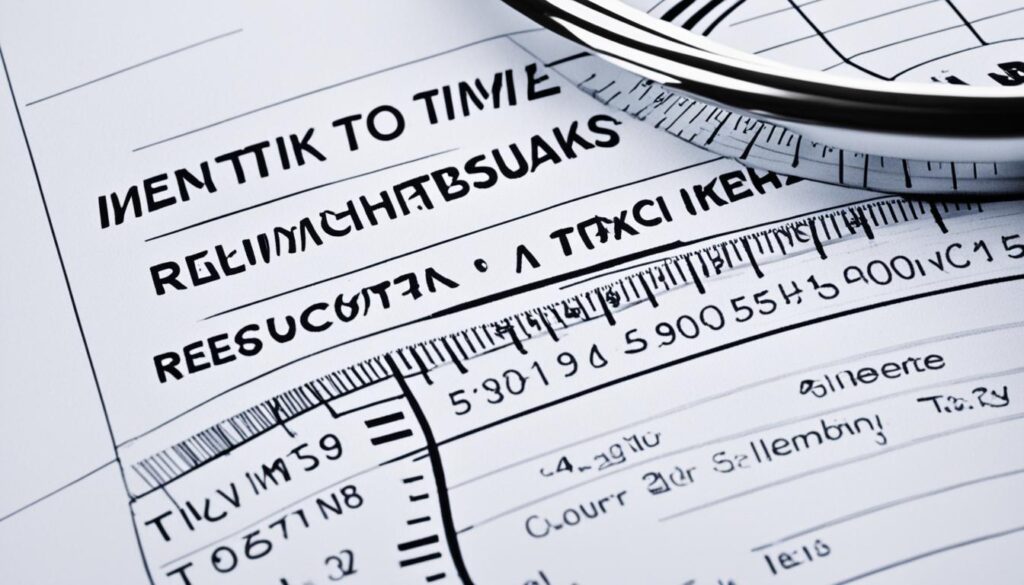Welcome to our blog on Time to Resolution, a critical metric for optimizing customer service. In today’s fast-paced world, customers expect quick and efficient resolutions to their issues. By reducing resolution time, you can enhance customer satisfaction, loyalty, and overall experience.
Time to Resolution, also known as Mean Time to Resolution or Time to Resolve, measures the average duration between when a customer interaction is created and when it is marked as “resolved.” It reflects how responsive and effective your customer service team is in addressing customer concerns.
Research has shown that being responsive and providing quick resolutions leads to improved customer satisfaction. When you resolve customer issues efficiently, you demonstrate respect for their time and create positive experiences that foster loyalty.
Monitoring Time to Resolution helps identify variations in customer experiences, spot conversations that need attention, categorize complex cases, and flag any processes that may be linked to longer resolution times.
Calculating Time to Resolution involves recording the start and end times of each customer service conversation and averaging that across all conversations. However, it is important to consider nuances in your customer service software that may affect the accuracy of the average and comparisons between systems.
To reduce Time to Resolution, it’s crucial to address common causes that contribute to longer resolution times, such as slow first response time, back-and-forth conversations, lack of information from customers, slow customer response, complex problems, and internal team inefficiencies.
In the upcoming sections, we will delve deeper into why Time to Resolution matters in customer service, how to calculate it accurately, setting benchmarks, strategies to reduce the resolution time, and how Ascendo can support you in this endeavor.
Stay tuned for more valuable insights on optimizing your customer service by reducing Time to Resolution!
Why Time To Resolution matters in customer service
Time to Resolution is a crucial customer service metric that plays a significant role in customer satisfaction and loyalty. It demonstrates respect for the customer’s time and directly contributes to an improved customer experience. Research shows that being responsive and effective at resolving issues leads to higher customer satisfaction levels and increased customer loyalty.
Time to Resolution measures the average amount of time taken to reach an acceptable resolution, going beyond just providing any response. It encompasses the entire process of resolving a customer’s query or concern, ensuring that their needs are met efficiently and effectively. By monitoring and benchmarking Time to Resolution, companies can identify areas for improvement and enhance overall customer satisfaction.
When customers experience quick and efficient resolutions, they feel valued and understood. This positive interaction leaves a lasting impression and strengthens their loyalty to the brand. On the other hand, lengthy resolution times can frustrate customers and lead to dissatisfaction.
“Time to Resolution is crucial in customer service because it demonstrates respect for the customer’s time and plays a significant role in customer satisfaction and loyalty.”
By focusing on improving Time to Resolution, companies can achieve several benefits. First and foremost, customers will have a more positive experience, leading to greater satisfaction and loyalty. A quick and effective resolution shows customers that their concerns are being addressed promptly, increasing their trust in the company.
Additionally, reducing the time it takes to resolve customer issues can result in improved operational efficiency. By identifying bottlenecks and inefficiencies in the resolution process, companies can optimize their customer service workflows and allocate resources more effectively.
Moreover, actively monitoring Time to Resolution allows companies to identify variations in customer experiences. This insight enables them to detect trends, spot conversations that require attention, and make data-driven decisions to improve the overall customer service experience.
By constantly striving to minimize Time to Resolution, companies can create a customer-centric culture that prioritizes efficiency and effectiveness. This focus on providing quick and satisfactory resolutions fosters customer loyalty and strengthens the relationship between the brand and its customers.
Improved Time to Resolution enhances the overall customer experience, leading to higher customer satisfaction, increased customer loyalty, and ultimately, greater business success.
The Importance of Time to Resolution in Customer Service
- Time to Resolution is a critical customer service metric that directly impacts customer satisfaction and loyalty.
- Being responsive and effective at resolving issues leads to improved customer experiences.
- Monitoring Time to Resolution helps identify variations in customer experiences and spot conversations that need attention.
- Reducing Time to Resolution demonstrates respect for the customer’s time and enhances overall customer satisfaction.
- Efficient resolutions contribute to increased customer loyalty and strengthen the brand-customer relationship.

Time to Resolution Benchmarks
| Benchmark Level | Time to Resolution Range (in hours) |
|---|---|
| Excellent | 0 – 4 |
| Good | 5 – 8 |
| Fair | 9 – 12 |
| Poor | 13+ |
Table: Time to Resolution Benchmarks
Setting Time to Resolution benchmarks is crucial for companies to gauge their performance and strive for continuous improvement. The table above provides a general guideline for benchmarking Time to Resolution based on different levels of performance. It is essential to remember that benchmarks may vary across industries and customer expectations. By analyzing historical data and industry standards, companies can establish relevant benchmarks and set realistic targets to enhance their customer service operations.
How to calculate Time to Resolution
Calculating Time to Resolution is a fundamental step in measuring and optimizing customer service performance. By accurately determining the average resolution time, companies can identify areas for improvement and set realistic goals to reduce resolution time further.
To calculate Time to Resolution, follow these simple steps:
- Record the start time of each customer service conversation.
- Record the end time of each customer service conversation.
- Calculate the difference between the start time and end time for each conversation.
- Sum the individual conversation times.
- Divide the sum by the total number of conversations to calculate the average resolution time.
Here’s an example to illustrate the calculation process:
Conversation 1: Started at 10:00 AM, ended at 10:15 AM – Total duration: 15 minutes
Conversation 2: Started at 11:30 AM, ended at 11:45 AM – Total duration: 15 minutes
Conversation 3: Started at 2:00 PM, ended at 2:30 PM – Total duration: 30 minutes
Total duration of all conversations: 15 + 15 + 30 = 60 minutes
Average resolution time: 60 minutes / 3 conversations = 20 minutes
Remember, nuances in customer service software and differences in measurement definitions can impact the accuracy of the average resolution time. It is essential to define resolution criteria, such as when to consider a conversation “resolved” and how to handle pending or unanswered conversations, to ensure consistent calculations.
By calculating Time to Resolution, companies can gain valuable insights into their customer service efficiency and make data-driven improvements. Let’s take a look at the following table, showcasing average resolution times for different customer service channels:
| Customer Service Channel | Average Resolution Time |
|---|---|
| Phone Support | 12 minutes |
| Email Support | 24 hours |
| Live Chat | 8 minutes |
| Social Media | 4 hours |

Time to Resolution benchmarks
Setting Time to Resolution benchmarks is a crucial step towards improving customer service and meeting customer expectations. Several factors influence these benchmarks, including the complexity of the issues being addressed and the resolution time of competitors in the industry.
When establishing benchmarks, companies should take into account various elements like past service experiences, information provided to customers, service level agreements, and the nature of their own business. Analyzing historical Time to Resolution data can provide valuable insights into benchmarking, especially when considering different customer types or product categories.
It is essential to establish benchmarks that align with customer expectations and consider the minimum time required to complete core tasks. Evaluating how competitors handle similar questions and issues can also provide valuable insights for benchmarking purposes.
| Factors to Consider | Action Steps |
|---|---|
| Past service experiences | Review and evaluate customer feedback and satisfaction ratings. |
| Information provided to customers | Ensure knowledge base articles and self-service resources are comprehensive and easily accessible. |
| Service level agreements | Define and communicate clear response and resolution time expectations to customers. |
| Nature of the business | Consider specific industry requirements, such as regulatory deadlines or critical task completion times. |
| Competitor resolution time | Monitor and analyze how competitors handle similar questions and issues. |
By using their own data as a baseline and continuously striving to improve, companies can set realistic benchmarks that drive customer satisfaction and support efficiency. Let’s discuss in the next section how you can work towards reducing your Time to Resolution and providing prompt resolutions to customer issues.

How to reduce your Time to Resolution
Reducing time to resolution is a top priority for customer service teams. By implementing effective strategies to address common causes of longer resolution times, companies can enhance customer satisfaction and improve operational efficiency. Here are some key methods to optimize your resolution time:
- Review and optimize triage processes:
Analyze and streamline the initial steps of issue resolution to ensure efficient prioritization and routing. Apply automation and intelligent workflows to categorize and assign customer issues accurately to the appropriate teams or agents. - Automate organization and workload distribution:
Leverage workflow automation tools to distribute workload effectively and ensure that customer issues are handled promptly. By automating routine tasks and notifications, you can minimize manual efforts and expedite the resolution process. - Foster analytical reading skills:
Equip your support agents with effective analytical reading skills, enabling them to grasp customer issues quickly and minimize unnecessary back-and-forth conversations. Encourage active listening, critical thinking, and concise communication to provide swift resolutions. - Gather comprehensive information upfront:
Empower your support teams to ask the right questions and gather as much relevant information as possible during the initial customer interaction. This helps avoid unnecessary delays caused by insufficient details or follow-up inquiries. - Ensure prompt customer responses:
Establish service-level agreements (SLAs) or response time expectations for customer interactions. Train your support agents to prioritize timely responses, reducing wait times and improving overall resolution speed. - Address internal team issues:
Identify and resolve any internal bottlenecks or inefficiencies that may impede the resolution process. Foster collaboration, provide adequate resources, and encourage ongoing training and professional development to enhance the performance of your support team. - Utilize automation and AI chatbots:
Deploy AI chatbots to handle common customer issues efficiently. Automation solutions can assist in providing instant responses and resolutions, reducing the burden on human agents and expediting the overall resolution time. - Analyze and streamline processes and workflows:
Regularly review and analyze your time usage data to identify areas where time is being lost or where processes can be streamlined. Implement solutions to optimize workflows, eliminate redundancies, and leverage automation technologies to maximize efficiency.
By actively implementing these strategies, your organization can effectively reduce time to resolution, providing quicker and more efficient resolutions to customer issues.

How Ascendo supports Time to Resolution
Ascendo is an advanced platform that leverages predictive, AI-based solutions to revolutionize customer support operations and drive down Time to Resolution. With Ascendo, your support team can gain access to a consolidated view of data, enabling them to easily retrieve knowledge bases, previous interactions, and relevant solutions. This streamlined approach empowers agents to swiftly provide accurate resolutions to customer issues, enhancing overall efficiency.
One key feature of Ascendo is its self-service functionality, which includes AI bots and smart search capabilities. By implementing Ascendo’s self-service tools, your customers can independently find answers to their common queries, reducing their reliance on support teams. This empowers customers to resolve their issues quickly and efficiently, resulting in faster Time to Resolution.
Additionally, Ascendo offers virtual agents on direct communication channels such as Slack and WhatsApp. These virtual agents provide interactive and accessible customer support, further expediting the resolution process. Through Ascendo’s primary and secondary predictions, your team can minimize resolution time while ensuring productive outcomes for both customers and agents.
By integrating Ascendo into your customer support operations, you can consolidate data, introduce self-service options, and utilize virtual agents. This will not only decrease Time to Resolution but also enhance your team’s efficiency, enabling you to provide proactive support and deliver an exceptional customer experience.
FAQ
What is Time to Resolution?
Time to Resolution is a critical customer service metric that measures the average amount of time between when a customer interaction is created and when it is marked as “resolved.”
Why is Time to Resolution important in customer service?
Time to Resolution is important because it directly impacts customer satisfaction and loyalty. Being responsive and effective at resolving issues leads to improved customer experiences.
How do you calculate Time to Resolution?
Calculating Time to Resolution involves recording the start and end times of each customer service conversation and averaging that out across all conversations.
Why are Time to Resolution benchmarks important?
Time to Resolution benchmarks help set realistic targets and improve customer service by understanding variations in customer experiences and identifying inefficiencies.
How can I reduce my Time to Resolution?
You can reduce Time to Resolution by addressing common causes of longer resolution times, such as slow first response time, back-and-forth conversations, and internal team inefficiencies.
How does Ascendo support Time to Resolution?
Ascendo provides predictive, AI-based solutions to improve customer support operations and reduce Time to Resolution. It offers consolidated data, self-service features, and virtual agents for interactive and efficient support.
